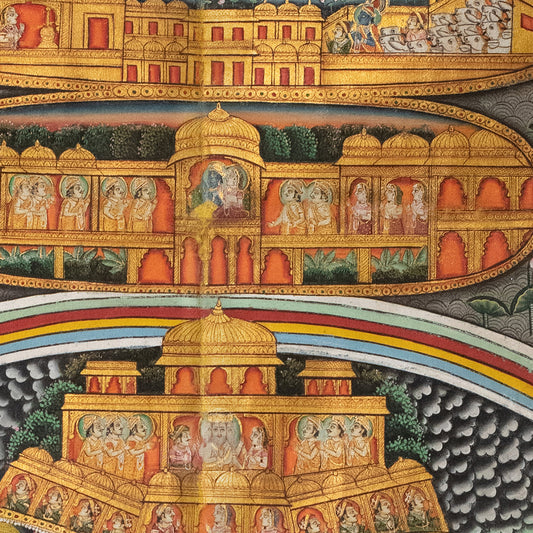Jain painting
Traditional Jain paintings serve as visual narratives reflecting the essence of this ancient Indian religious tradition. Executed with intricate detailing and a palette of soft, pastel colors, these artworks often find their place in Jain manuscripts like Kalpa Sutras and Kalakacharyakatha. Illustrations within these manuscripts, portraying Tirthankaras and divine beings, convey the principles of non-violence and spiritual purity central to Jain philosophy. Symbolic motifs, such as lotus flowers and celestial beings, are meticulously incorporated to represent the transcendental nature of Jain cosmology, while depictions of Samavasarana emphasize the dissemination of spiritual knowledge and the path to enlightenment. Traditional Jain paintings thus stand not only as aesthetically captivating expressions but also as profound conduits for meditation and contemplation, encapsulating the timeless wisdom and values inherent in Jain teachings. They serve as windows to a spiritual realm, where the marriage of art and spirituality creates a transcendent experience that resonates with the profound teachings of Jainism.








.png?v=180585433461421961291732270581)




















